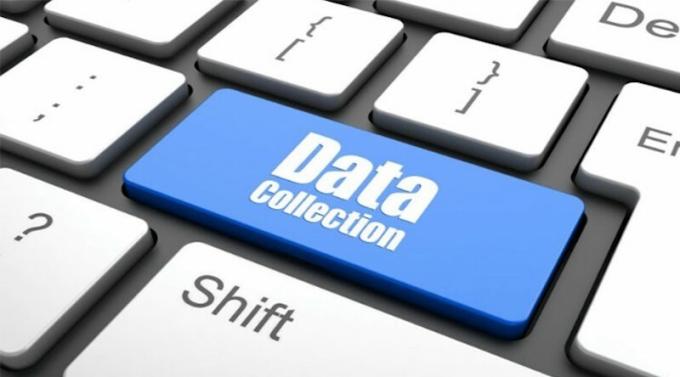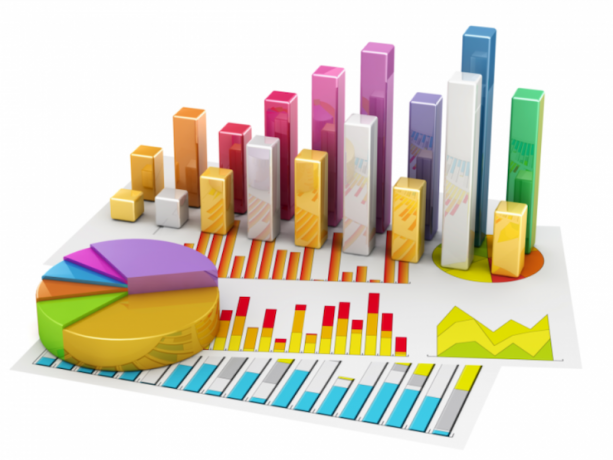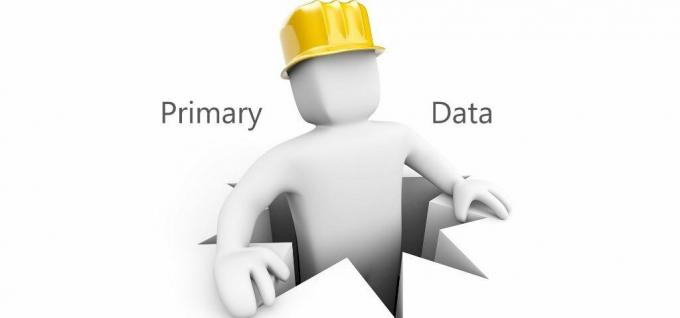Data Collection Techniques and Examples (Summary)
Loading...
One of the important things in a research is data collection. Based on the data, processing and analysis can be carried out so as to produce valid information that supports research. In order for the data collected to be valid, appropriate data collection techniques are needed.
The use of appropriate techniques in data collection will greatly affect the research process because it is more focused and controlled. In the following, we will present a review of the techniques and methods of data collection as well as the processes and types that are important to know.
List of contents
Definition of Data Collection Techniques

Previously, it was mentioned about the importance of using data collection techniques and methods in a study. Well, maybe you also want to know more about what is meant by data collection techniques.
Basically, techniques in data collection can be interpreted as methods or techniques used by researchers in collecting data related to the things to be studied. Therefore, effective and systematic steps are needed so that the data is in accordance with the facts and is valid.
Data collection itself aims to obtain data or information based on facts in the field so that it is useful to support research. In this case the selection of techniques for data collection will depend on the research method.
In this data collection technique, certain instruments are needed that function to collect, examine and investigate the problems being studied. These instruments will help researchers explore existing symptoms as a basis for proving or disproving hypotheses.
Therefore, the instruments used in data collection must be valid and reliable. For more details, the following are some things that must be considered when collecting data:
- The data has been determined based on the research variables, then it can be directly processed and analyzed systematically.
- Data that has been analyzed and processed will be selected based on its relevance to the object of research, concepts and events. The data can be in the form of numbers, images and so on.
- Data collection was carried out to obtain information so that the research objectives through the hypothesis were achieved.
- The data collected is determined by several variables in the hypothesis, it can also be a pre-existing sample.
Read: Example of Negotiation Text
Data Collection Process

In the data collection process, the use of data collection techniques must be carried out systematically and directed so that the data can be accounted for and proven true. Because broadly speaking, the data collection process must be able to prove the previous hypothesis.
In the data collection process, there are 8 stages that need to be considered, namely:
1. Literature review and consultation with competent experts
The first stage is to collect various kinds of information relevant to the object of research. This information can be obtained through literature review and consultation with experts who are competent, understand the concepts, as well as issues and research variables.
2. Studying and approaching respondents
The next process or stage is to study and approach community groups who will become respondents, so that data collection activities can be well received.
3. Maintain a good relationship with respondents and their environment
You also need to establish good communication and relationships with respondents and their environment. In this case, it is also necessary to study the respondent's way of thinking, habits carried out, language used and so on.
4. Doing a pilot study or trial
The next stage is to conduct a pilot study or trial of research instruments in community groups and not as a sample. The goal is to find out whether the instrument is communicative and easy to understand.
5. Formulate and formulate questions
If you have finished doing the trial, then the next step is to compile the instruments that have been obtained into the form of relevant questions according to the research objectives. The question must have a substantive and significant meaning.
6. Taking notes
If the research instrument has been prepared, then the next step is to record and code the data needed by the respondent. This record is very important to facilitate the subsequent analysis process.
7. Cross check the validity and reliability of the data
After completing the recording, the step that needs to be done is to cross check the data to test its veracity again. That is by conducting an inspection so that it can ensure its validity and reliability.
8. Organizing data for analysis
The last stage after the data from the respondents is collected is to organize the data and then start data analysis so that all the data used is valid.
Read: Example of Anecdotal Text
Data collection technique
If you already understand the process and stages required in collecting the data, then the next step is to get to know some data collection techniques. According to Sugiyono (2017), there are 4 techniques that can be used to collect data, namely:
1. Observation or Observation

Observation is one of the techniques of collecting data by systematically observing and recording the symptoms or research objects. This type of technique is one of the easiest and is often applied to statistical survey research.
Like when you want to examine certain attitudes and behaviors of a group of people. Usually in the observation data collection technique, the researcher will go directly to the field and determine the most effective measuring tool to be applied.
2. Questionnaire or Questionnaire

The second technique of collecting data is a questionnaire or questionnaire which is done by giving a number of questions to respondents so that they can provide answers to researchers.
This technique may look easy and simple, but it is actually quite difficult to apply. Especially if the number of respondents is very large and spread across various regions.
The technique of collecting data in the form of a questionnaire has several principles that must be considered, including:
- The content and purpose of the questions are used to measure measurements with a clear scale and choice of answers.
- The language used in the questionnaire must be understood by the respondents to make it easier for them to answer questions.
- Questions can be open or closed. In open-ended questions, respondents are given the freedom to answer, while in closed-ended questions, there are answer choices for respondents.
3. Interview or Interview

The next data collection technique is using the interview method or interviews conducted directly between researchers and respondents. This technique can be used as an alternative as a preliminary study, because for many respondents it is difficult to apply.
4. Document

The next technique that can be done to collect data is using documents. In this case the researcher can get the information needed through notes or documents about events that have taken place previously.
The documents used can be in the form of pictures, writings, or monumental works from other parties. Such as biographies, diaries, regulations, history and so on.
Read: Example of Social Explanation Text
Principles of Data Collection

In general, there are three principles that must be considered and applied in data collection techniques, namely:
- Collect data as completely as possible and not as much as possible.
- Considering the accuracy of the data collected, including the type of data, the time of data collection, the usefulness and relevance of the data to the research.
- Considering the correctness of the data collected, both from the data itself and other sources.
Data Measurement Scale
Advertisement

The data scale or what is called the data measurement scale is a set of rules used to classify data or grouping the variables to be measured so that the use of analytical techniques and research stages can be determined next.
The following are the types of measurement scales in research data collection techniques:
1. Nominal Scale
Nominal scale refers to the grouping of facts and events in which only qualitative differences exist. The nominal scale has several characteristics, including:
- The results of data calculations are not in the form of fractions.
- The numbers listed in the data are for label purposes only.
- No order, no new size and no absolute zero.
The following are some examples of nominal scales to be aware of:
- Gender: male or female.
- Type of work: ASN, Private Employees, Farmers, Entrepreneurs, and others.
- Class years: 2020, 2021, 2022.
2. Ordinal Scale
The ordinal scale is a type of data measurement scale in which there is a level or sequence starting from the lowest to the highest number. The preparation of this scale is based on certain characteristics and the order between one another is not the same distance.
The characteristics of the ordinal scale include:
- Have separate data categories.
- Data category rules are logical.
- Determination of data categories is based on special characteristics.
The following is an example of an ordinal scale to know:
- Level of customer satisfaction: 1, 2, 3, 4, 5 or 50, 60, 70, 80, 90.
- Rank in the race: 1, 2, 3, 4, 5.
- Position in the company: Board of Directors, Director, General Manager, Manager, Staff.
3. Interval Scale
Interval scale is a type of data measurement scale that has the same distance from one level to another, or in other words the weights are the same. The characteristics of the interval measurement scale include:
- The categories of data in the measurement are mutually exclusive and logical.
- Determination of data categories is based on special characteristics.
- Zero on the measurement scale indicates a point on the scale and there is no absolute zero.
The following is an example of an interval scale to know:
Temperature Measurement
For example:
- Interval 31 – 34 degrees Celsius: Low
- Interval 35 – 38 degrees Celsius: Normal
- Interval 39 – 40 degrees Celsius: High
Intelligence Level or IQ
For example:
- Interval 70 – 79 is categorized as Very Low.
- The interval of 80 – 90 is in the Low category.
- Interval 91 – 110 is in the Normal category.
- Interval 111 – 120 will enter the High category.
- Interval 121 – 130 is categorized as Superior.
4. Ratio Scale
Different from the interval scale, the ratio scale is a type of scale that has the same distance and absolute zero value. In terms of its characteristics, it is almost the same as the interval scale, but the ratio scale has absolute zero which indicates the absence of characteristics.
In addition, the ratio measurement scale also has a comparison value in it. An example is as follows:
If the height of the X building is 100 meters and the height of the Y building is 25 meters, then it can be said that the height of the X building is four times higher than the Y building. (X: Y=4:1).
Some examples of ratio scales include weight, height, human age, scale size, test scores, and distance.
Read: Example of Critical Response Text
Data Types
In carrying out data collection techniques, you need valid data to support research. The type of data itself is divided into three categories, namely data based on the nature of the research, based on the source, and based on how to get it.
1. Data Based on Its Nature

Based on its nature, the types of data in research can be divided into two, namely:
a. Qualitative Data
Qualitative data is a type of data that cannot be measured numerically because it is in the form of a description or narrative that aims to explain a particular event or phenomenon.
Examples are a description of an area under study, the history of a place, biographies of resource persons who are research references, and so on.
b. Quantitative Data
Quantitative data is a type of data that can be measured and calculated directly as a number or numbers. This variable is also an attribute to measure and describe the object of research.
Examples are data on the number of students each year in a school that is the object of research, data on product sales in a supermarket every day, and data on the age of students in a class.
2. Data by Source

Based on the source, data in data collection techniques can be divided into two, namely:
a. Primary data
Primary data is the main research data obtained directly from research subjects, sources or respondents, but is not included in quantitative research.
An example is the youth census in an urban village area. The kelurahan employee will take the data from the head of the local RT or RW so that the number of teenagers in the kelurahan area is obtained. This data is the primary data.
b. Secondary Data
If primary data becomes primary data or primary data, then it is different from secondary data which is used as complementary data. The data is not obtained from the respondent's first hand but from the second hand, and so on.
Secondary data is also not included in quantitative research. Usually secondary data is obtained from documents and literature such as magazines, newspapers, academic manuscripts, financial reports, tax reports and so on.
3. Data Based on How to Get

If based on how to get it, research data can be divided into three, namely:
a. Observation Data
Previously, we discussed the data collection technique using the observation method. In this method the researcher will go into the field and make direct observations of the object of research.
Furthermore, the data obtained will be recorded, either through writing, photos, voice recordings, videos and so on. The data collection methods in this observation are divided into two, namely:
b. Participation Observation
In this method the researcher will be directly involved with the activities carried out by the object of research. So that researchers do not just make observations but also mingle and participate in these activities.
This method is considered effective for this type of research that includes psychological aspects but on the other hand it is less objective because the participants already know if it is used as the object of research.
An example of a participant observation data collection technique is that researchers are directly involved in “rewang” activities in rural areas to examine the traditions and culture of gotong royong in the area.
c. Non-Participant Observation
As the name implies, in this method the researcher only acts as a spectator and does not participate in the activities studied with the respondent.
Usually the method is carried out secretly so that the object of research does not realize if it is being observed. The goal is that the data obtained is accurate and objective. Even so, researchers must have mastered the theory in their research.
One example of non-participant observation is the researcher researching the ongoing "Nyadran" tradition. Researchers only observe how these activities are carried out by the local community.
4. Interview

Other types of data can be obtained through interview or interview data collection methods. In this case the researcher will hold a question and answer session with the respondents so that they can get subjective information related to the theme under study.
5. Experimental

In this technique, researchers will obtain data through experimental methods, namely by manipulating one or more variables which will later affect other variables.
In addition, data can also be distinguished based on the time of collection. That is incidental or cross-sectional data collected at a certain time and periodic data collected within a certain time span to determine the development of an event.
Based on the above review, it can be concluded that data collection techniques are a very important part of a study. Therefore, the technique used must be appropriate. The goal is that the results of the research carried out are valid and can be accounted for.
X CLOSE
Advertisements
ADVERTISEMENT
X CLOSE
